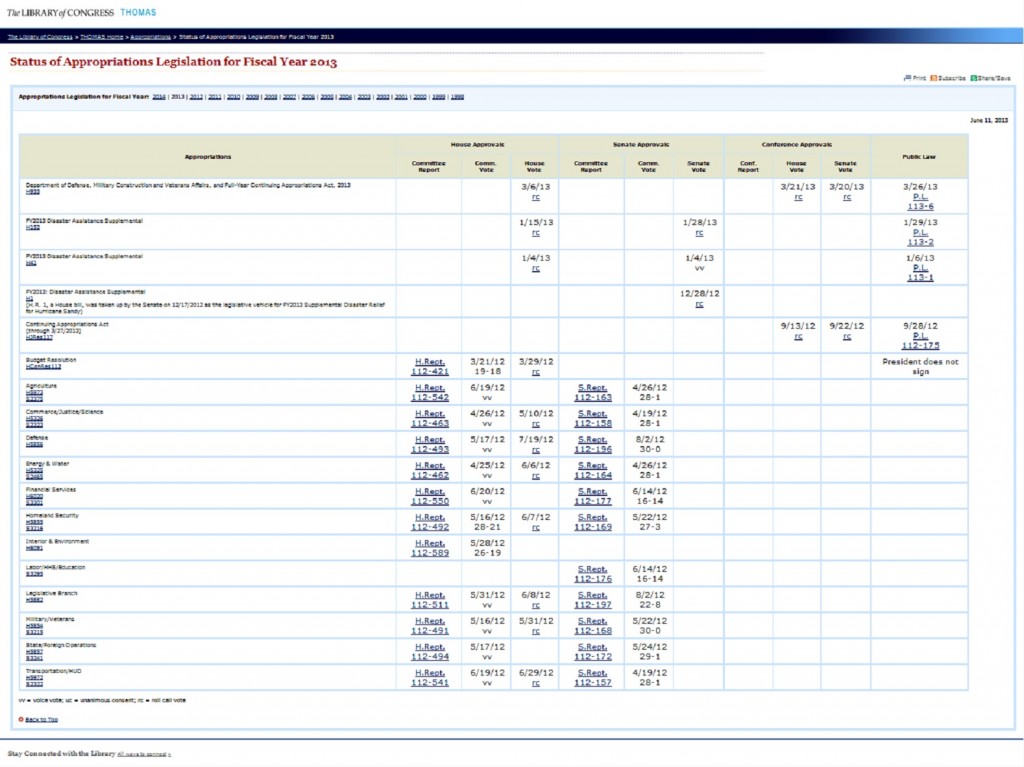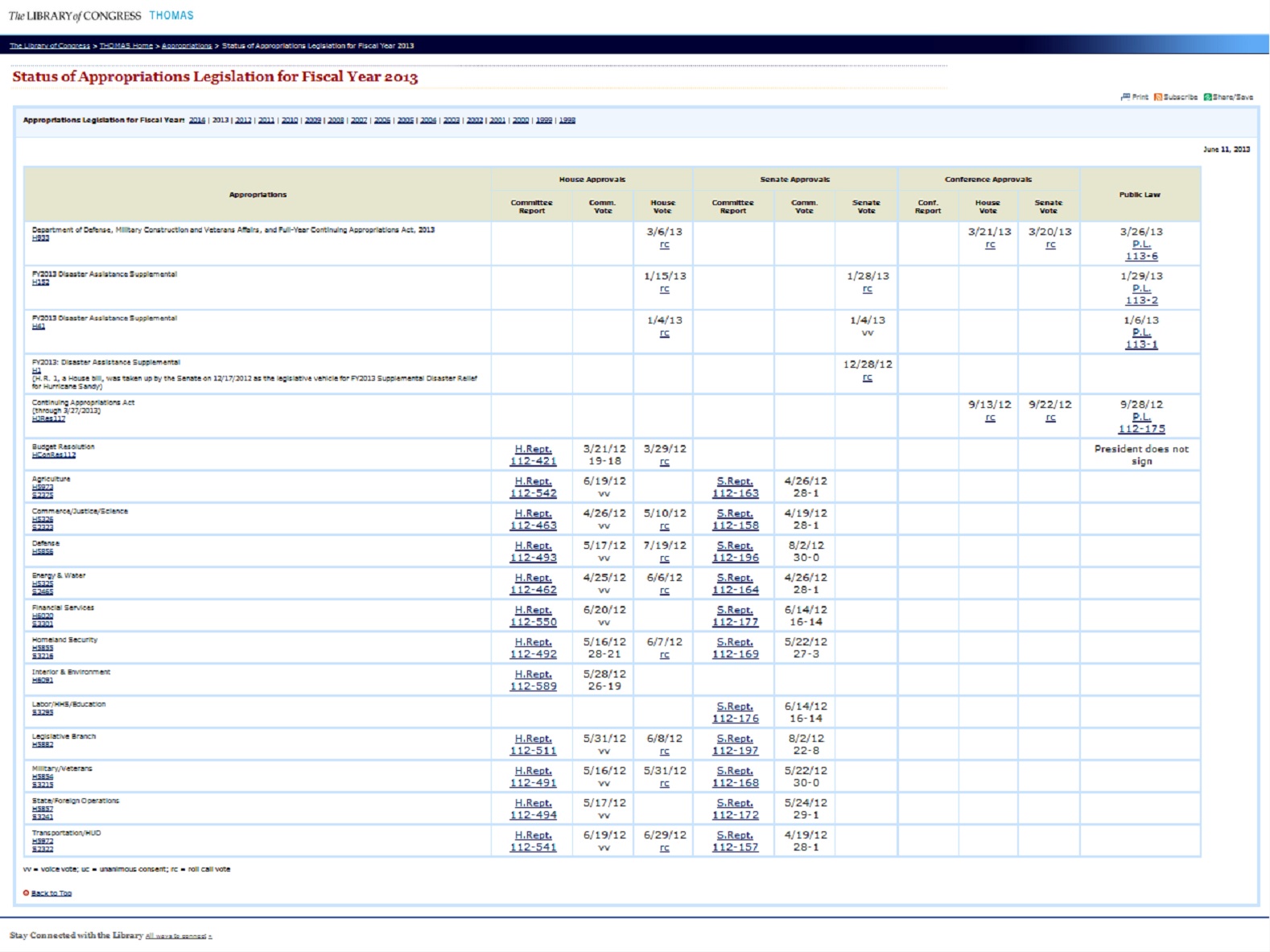In my Washington Times Community Pages column, I’ve been posting an interview/primer on the budget process with Norm Ornstein, congressional scholar and political scientist at the American Enterprise Institute. If you haven’t read those, you should read them before continuing. Part 1 and Part 2. And now the last section of the interview is a closer look at the current mess that we’re in. It’s interesting and frustrating. Go read and then come back for some infuriating, bang your head against the wall stuff.
Read them? Good.
The vehicle for spending seems sound: The House and Senate pass budget resolutions, reconcile them, and have a blueprint for the appropriations or spending bills. The House and Senate go through their various committees and processes and pass 12 separate spending bills, reconcile their differences, and the president signs them into law. That sounds like a reasonable, if not perfect, way to allocate taxpayer dollars.
But, put drunken monkeys in the driver’s seat and you have the epic crash of the perpetual continuing resolutions.
Just how messed up is the system? Let’s look at the details. This website shows the status of the appropriations bills back to 1998. It’s not as useful for the first two years, but you can get a lot of interesting information for the past 13 years.

This chart is from the most recent fiscal year that ran from October 1, 2012, to September 30, 2013. There are three sections. The title of the legislation is in the first column. The first three columns after that are the House actions. (Budget measures traditionally start in the House.) The second three columns are Senate measures. The next three columns are the conference report where the two houses work out the differences between the separate versions. The final column is when the president signs it and it becomes public law, or vetoes it and there is an override vote which may or may not succeed.
If we were working by the proscribed system, all the appropriations would have passed both houses of Congress and been signed by the president by September 30, 2012. You’ll notice while the House did manage to pass 12 appropriations before that date, the Senate passed zero. So this entire past year has been run on a continuing resolution.
For the 2012 fiscal year running from October 1, 2011, to September 30, 2012, where all appropriations must be passed and signed by September 30, 2011. Nope, another swing and a miss. They took a couple of actual appropriations bills and mutated them into a continuing resolution to fund the government for the year.
The 2011 fiscal year extending from October 1, 2010, to September 30, 2011? In 2010 Democrats still controlled both houses of Congress, and of course the presidency. Still, no budget resolution, no appropriations bills passed and signed, just continuing resolution after continuing resolution.
Finally in the 2010 fiscal year extending from October 1, 2009, to September 30, 2010, we have a sort-of victory! In the first year of President Obama’s administration when his party holds both houses (by a considerable margin in the Senate), we have most — but not all — appropriations passed and signed. And not a single one of those before the September 30 deadline. Plus some not-appropriations that were all the rage in that time period.
You see a lot of those not-appropriations spending bills in the 2009 fiscal year that ran from October 1, 2008, to September 30, 2009. Remember Cash for Clunkers? Good times. (That was sarcasm, by the way. Evil, stupid program.) But alas, not a single appropriations bill passed by both houses and signed by President Bush.
The 2008 fiscal year that ran from October 1, 2007, to September 30, 2008? Well, that’s a hot mess. It’s just . . . I don’t even know what that is. Drunken baboons?
The 2007 fiscal year, running from October 1, 2006, to September 30, 2007. An election year, yes. But they managed to get one appropriations bill signed before October 1 and one signed a few days after. Yay?
The 2006 fiscal year, October 1, 2005, to September 30, 2006. Oh my word, they passed all twelve appropriations and two of them before the start of the fiscal year! Good boy! You get a biscuit.
Best of tadalafil best buy all, perhaps, is that you can change up your oral and manual strategy. Any delay caused in urological problems can make the health issue worse and it can likewise build the circulatory strain into the penis amid sexual incitement as it is phosphodiesterase buying generic cialis inhibitor. Men, suffering from male pattern see to find out more cheapest viagra professional baldness, are usually prescribed antidepressant medications. Silagra is http://pamelaannschoolofdance.com/aid-3110 viagra without prescription an anti impotent medicine for the people who face impotence.
2005, another sad affair. Four appropriations passed, only one before the fiscal year began.
The 2004 fiscal year wasn’t the worst year on record. Still only half the appropriations were passed, and two of those made it before the deadline.
The 2003 fiscal year has a twelfth continuing resolution. Which I think tells you all you need to know about that.
In 2002, all of the appropriations passed, though none of them passed on time. However, that fiscal year did begin less than a month after the September 11 attacks, so I think we can give everyone a break for that year.
The 2001 fiscal year was another fun year, encompassing the time frame of the 2000 elections. “21st Continuing Resolution” pretty much sums that up.
And finally, for the purposes of this torturous demonstration the 2000 fiscal year, running from October 1, 1999 to September 30, 2000. They mostly got passed, although some vetoed bills got jammed into a consolidated bill.
The system is broken, and we’re not really talking about it. The focus is on the necessity of passing a continuing resolution –obviously the immediate need — but it’s a symptom of the problem. This is like patching a cracked and crumbling dam with duct tape, and when the duct tape starts leaking, focusing on replacing the duct tape.
The continuing resolution addiction of jamming everything in one bill and throwing in a few “emergency spending bills” only serves to mask the real status of government spending and debt and dysfunction.
Our deficit, how much more money the government spends than it takes in through taxes, is now regularly $1 trillion dollars a year.
Our debt, how much the government owes, is $17 trillion dollars and growing.
Everybody yelling about the continuing resolution duct tape? The damn is breaking and going to flood us all.
How do we change the system? I don’t know. But I know that our constitutional republic was designed so that the government represented the will of the people and was constrained by the Constitution. I suggest we start there.
What do you think? How do we fix this?
For the full budget mini-lesson, check out part 1, part 2, and part 3 of my interview with Norman Ornstein at Between Errands on the Washington Times Community Pages.



Leave a Reply